Abstract
The measurement of hand-transmitted vibration converts oscillatory movements to a form in which they can be evaluated with respect to human responses and assessed for their acceptability. This paper presents methods of measurement, evaluation, and assessment currently advocated in standards and other forms of guidance. The degree to which the methods of evaluating different frequencies, directions, and durations of vibration affect the assessment of vibration on different tools is illustrated. With the frequency weighting currently used to allow for the effects of different frequencies there is little need to measure vibration at frequencies as high as 1000 Hz; this has significant implications to the design and evaluation of proposed antivibration devices, including gloves. Without the current frequency weighting, vibration at frequencies greater than 250 Hz can contribute to the magnitude of the vibration, but many common causes of injury from hand-transmitted vibration have their dominant components of vibration below 250 Hz. On many powered tools, although the dominant frequency of vibration is the same before and after frequency weighting, the reported magnitude of vibration is greatly affected by the frequency weighting. On tools with dominant low frequencies, their vibration is rated as being of far greater importance relative to other tools when considering frequency-weighted acceleration than when considering unweighted acceleration. It is shown that the effect of considering three axes of vibration as opposed to one axis has a greater effect on some tools than on others. The uncertainties and assumptions involved in the measurement, evaluation, and assessment of hand-transmitted vibration are reviewed. It is suggested that whereas current decisions on health and welfare should be based on current assessment methods, the measurement and evaluation of hand-transmitted vibration should involve the collection and reporting of data which allow other interpretations in the future.
Full text
PDF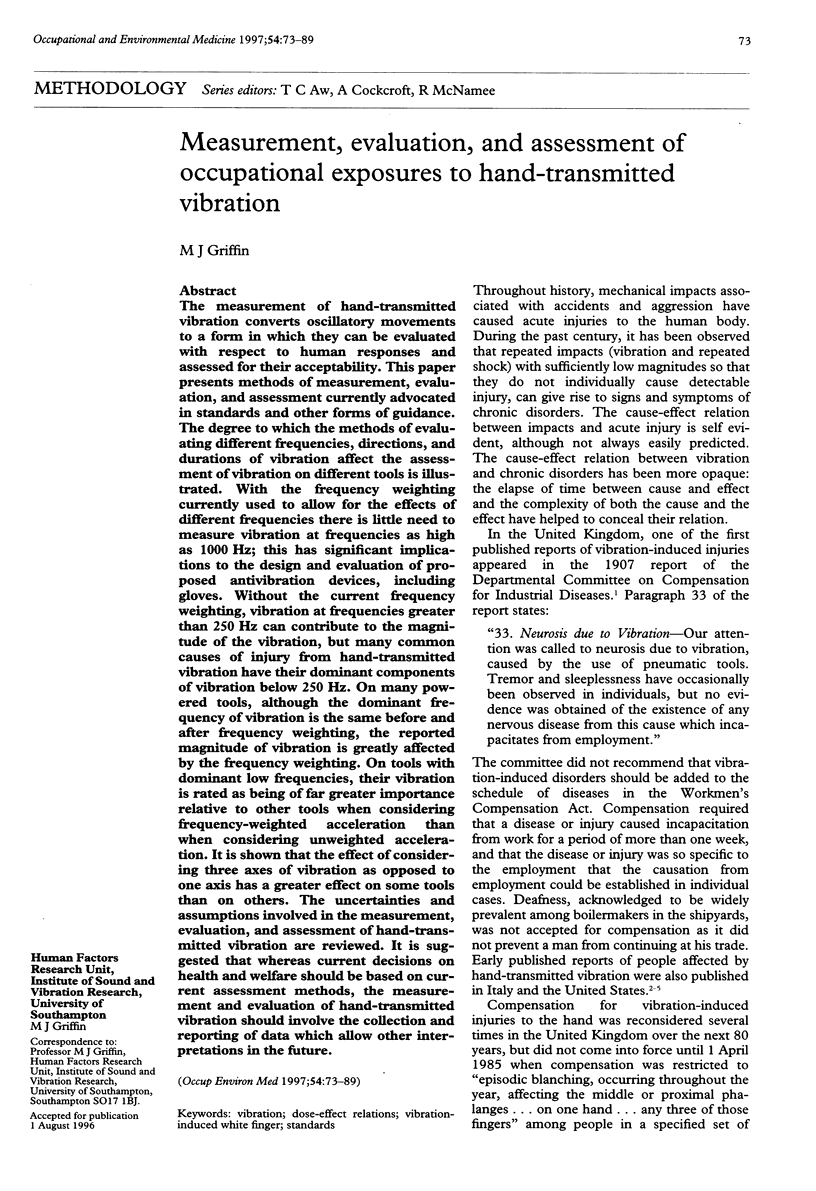
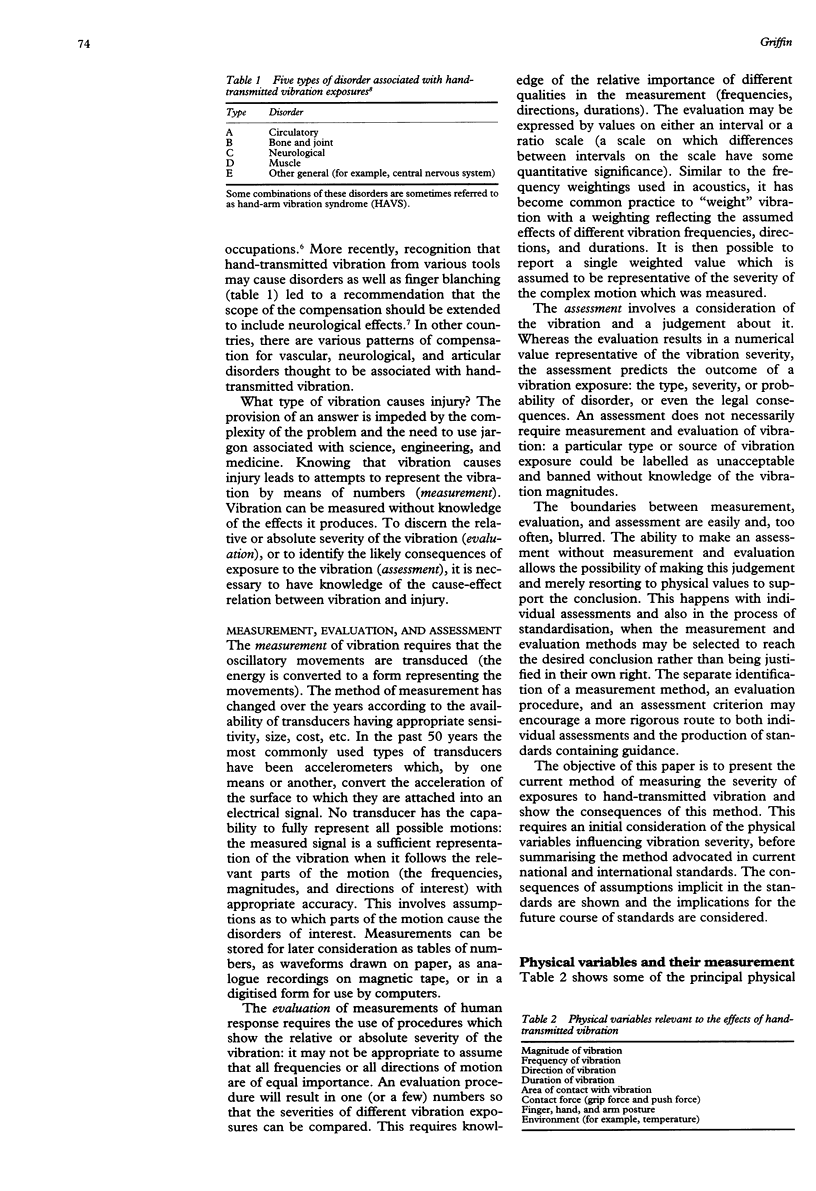
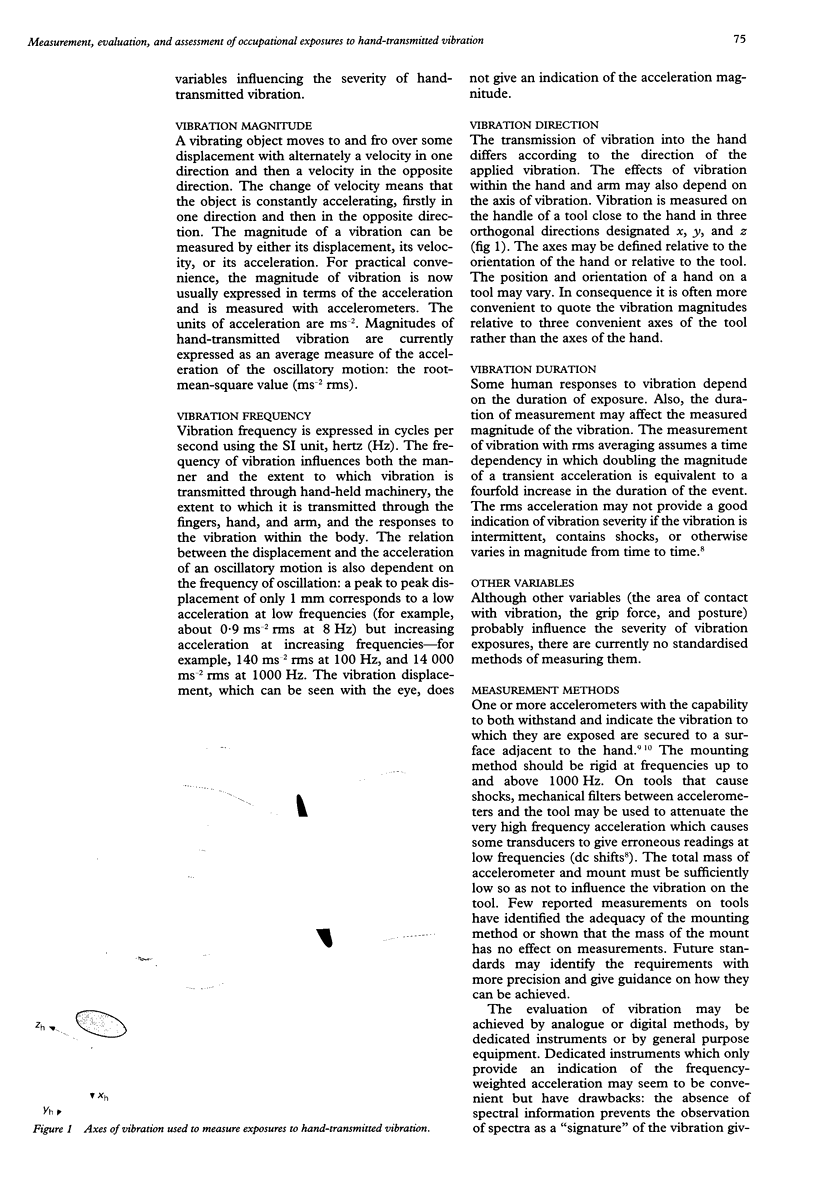
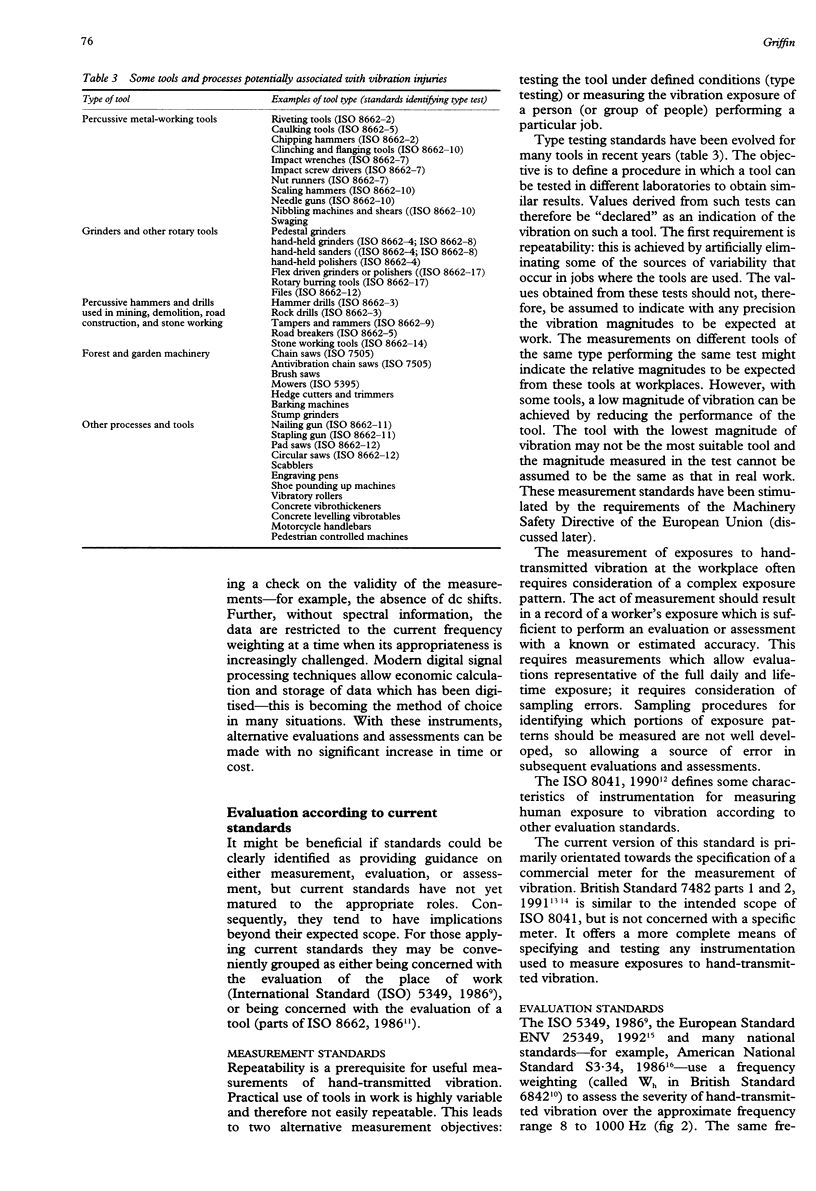
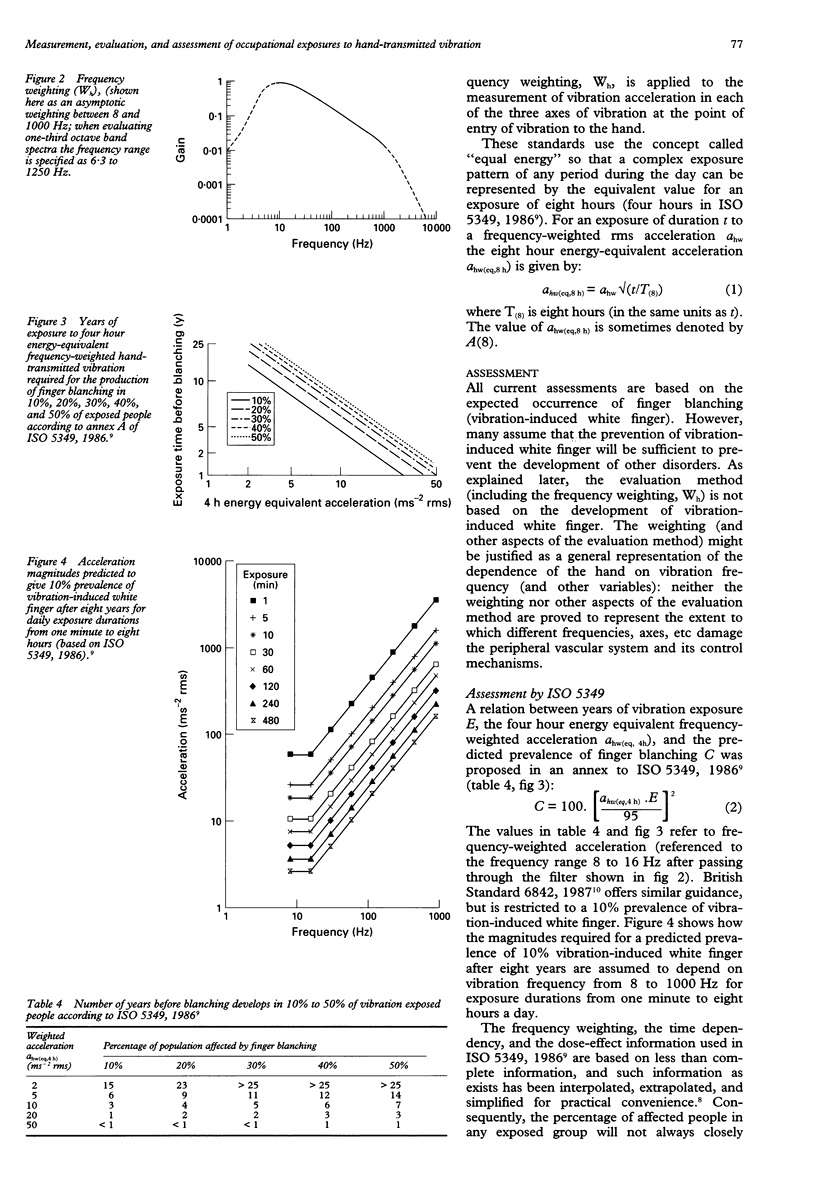


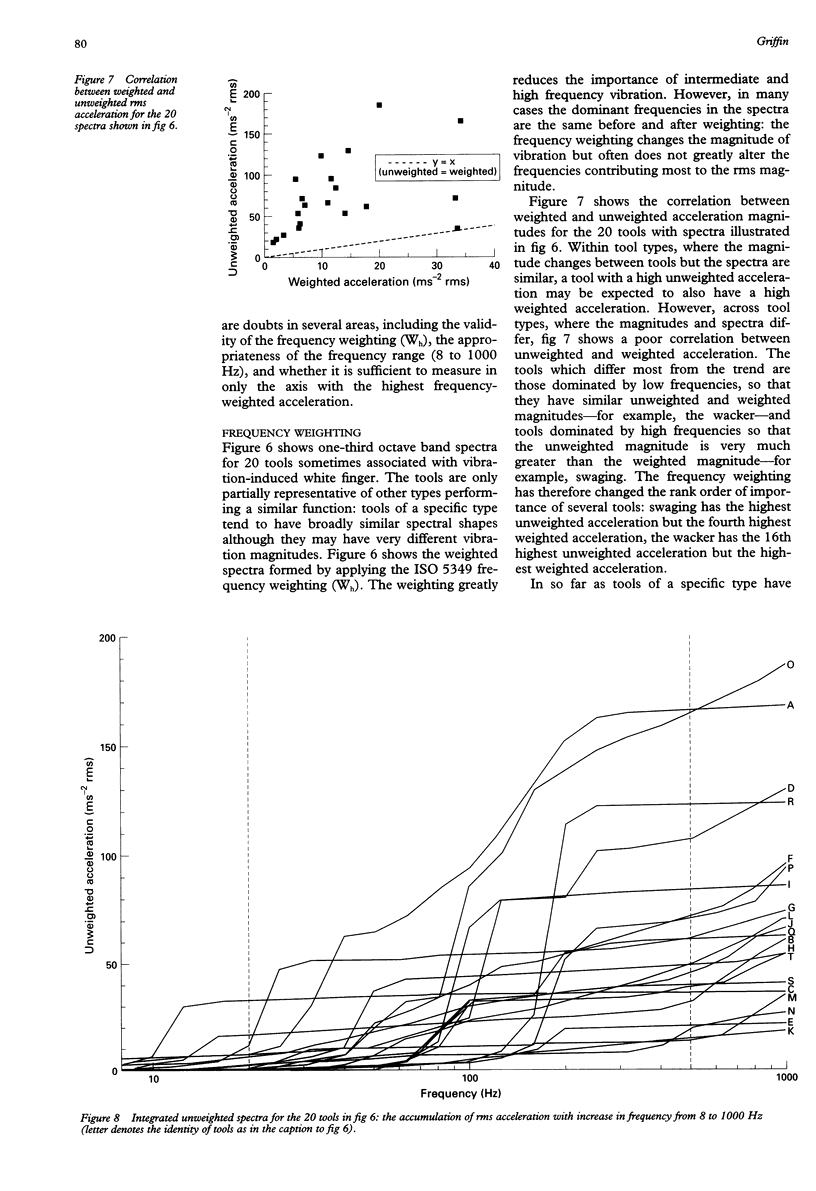
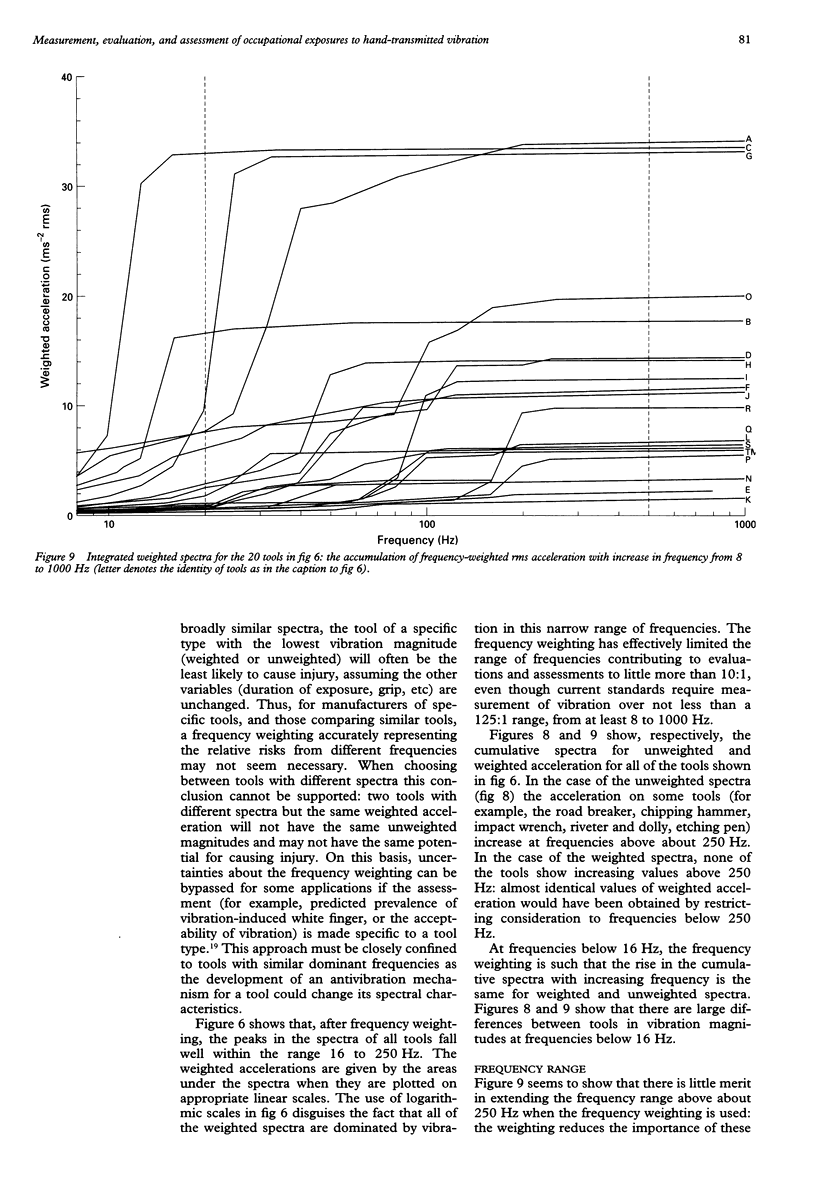

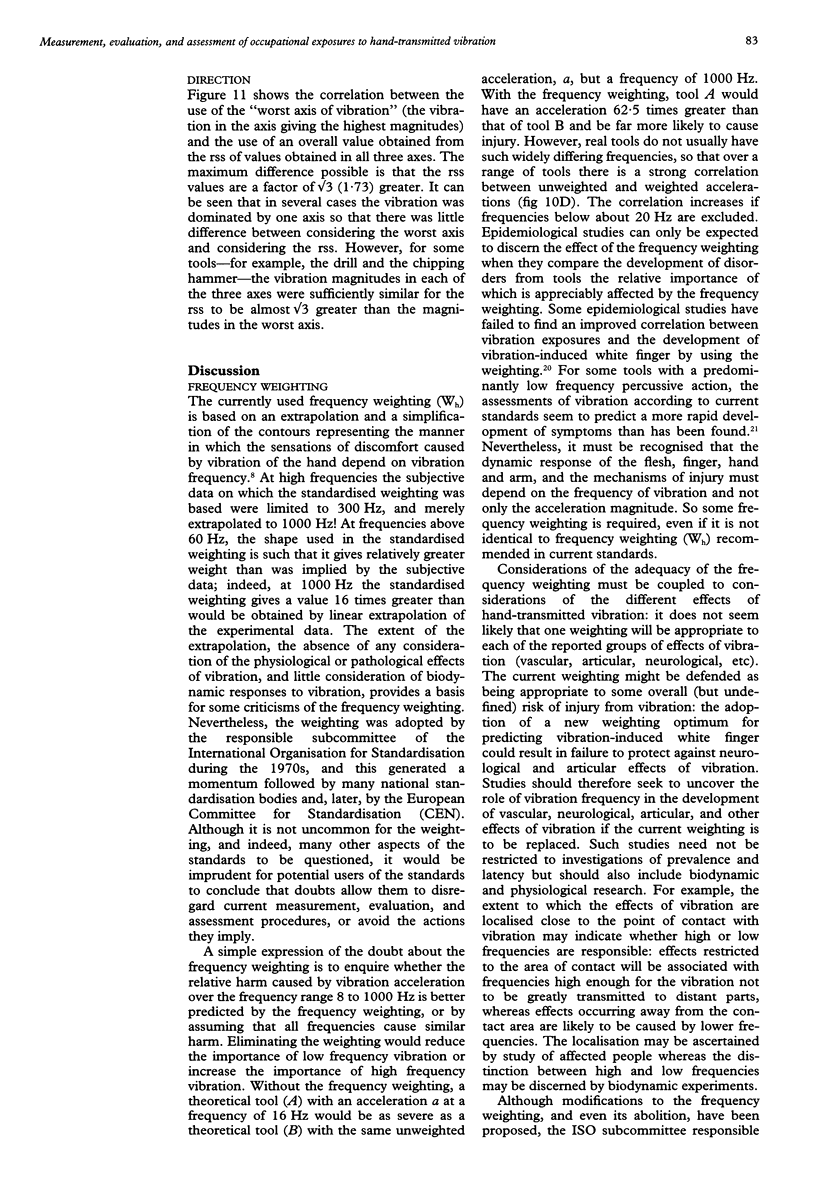
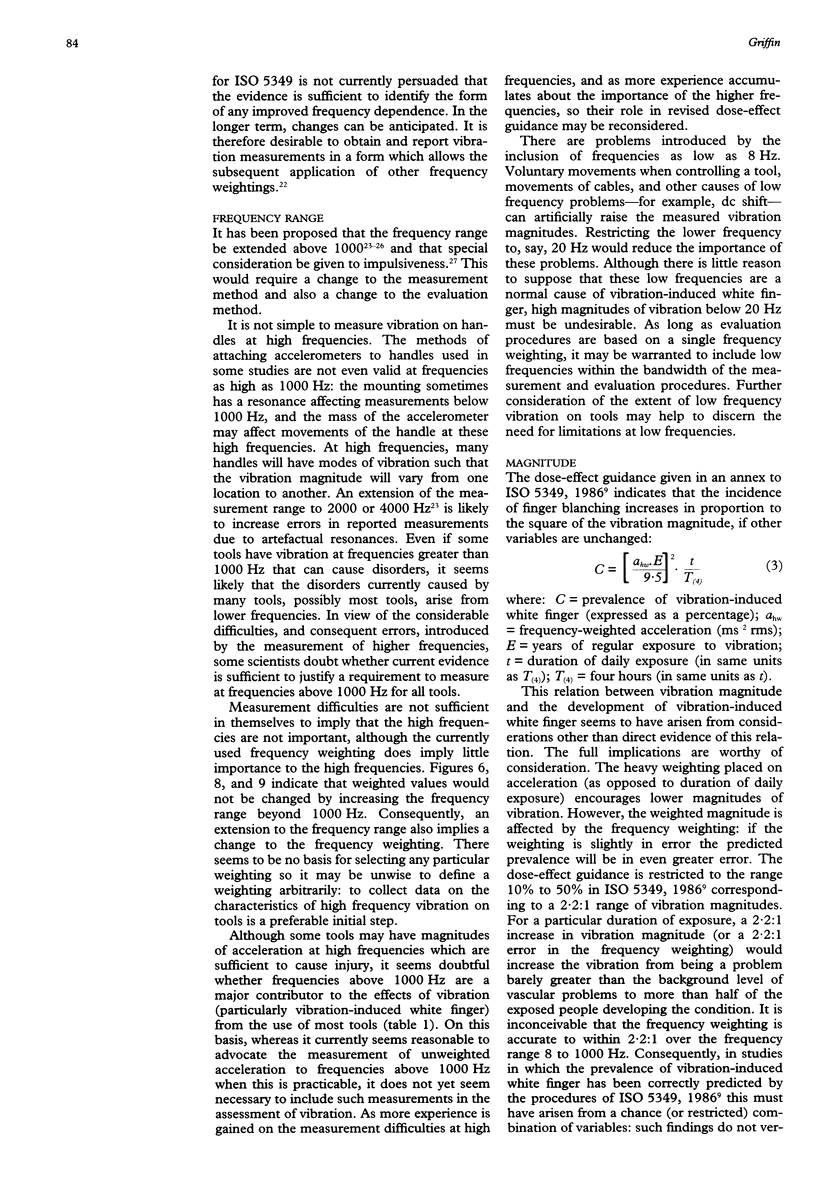
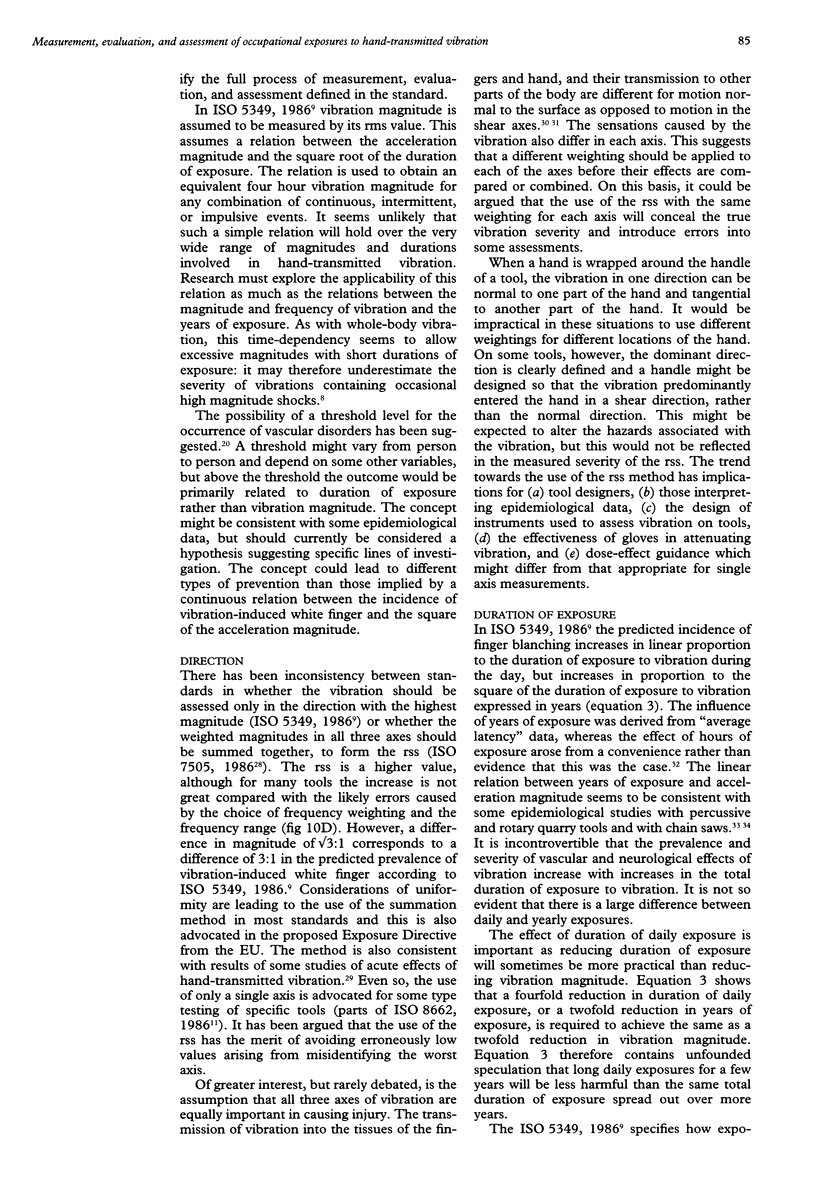
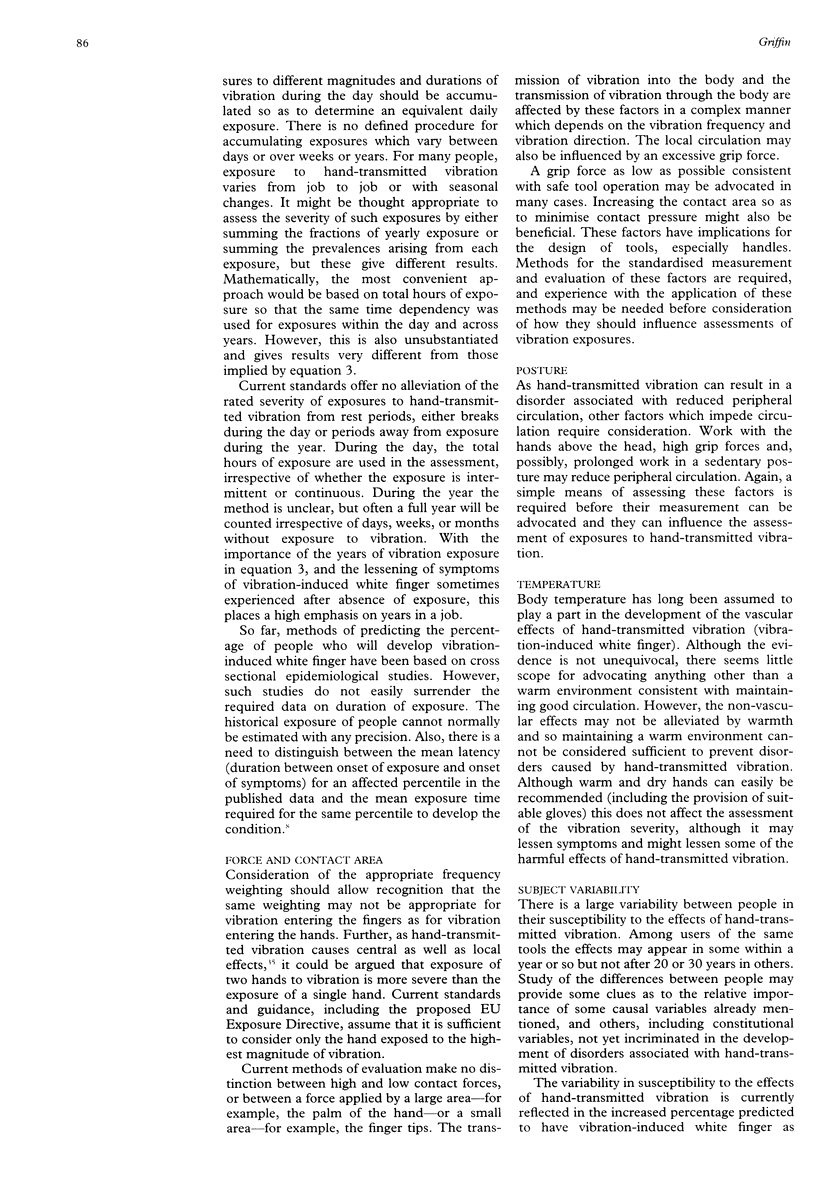
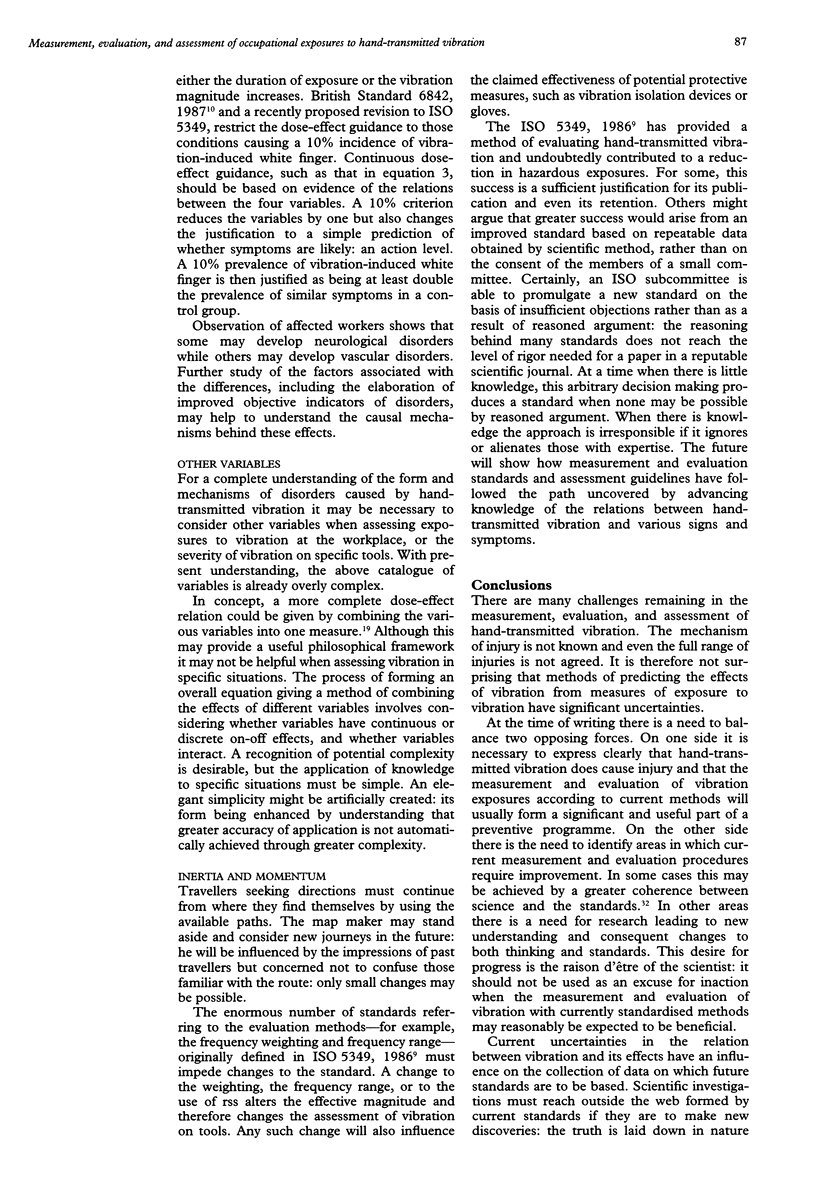
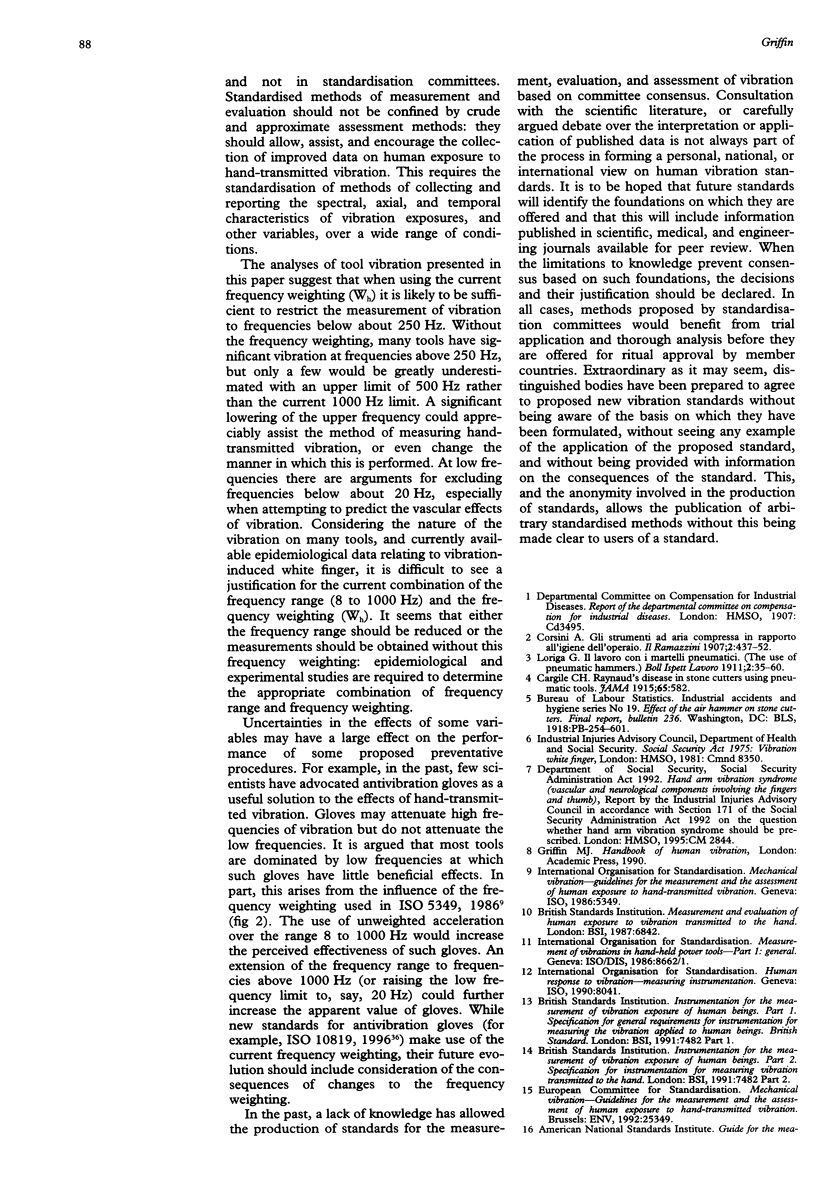
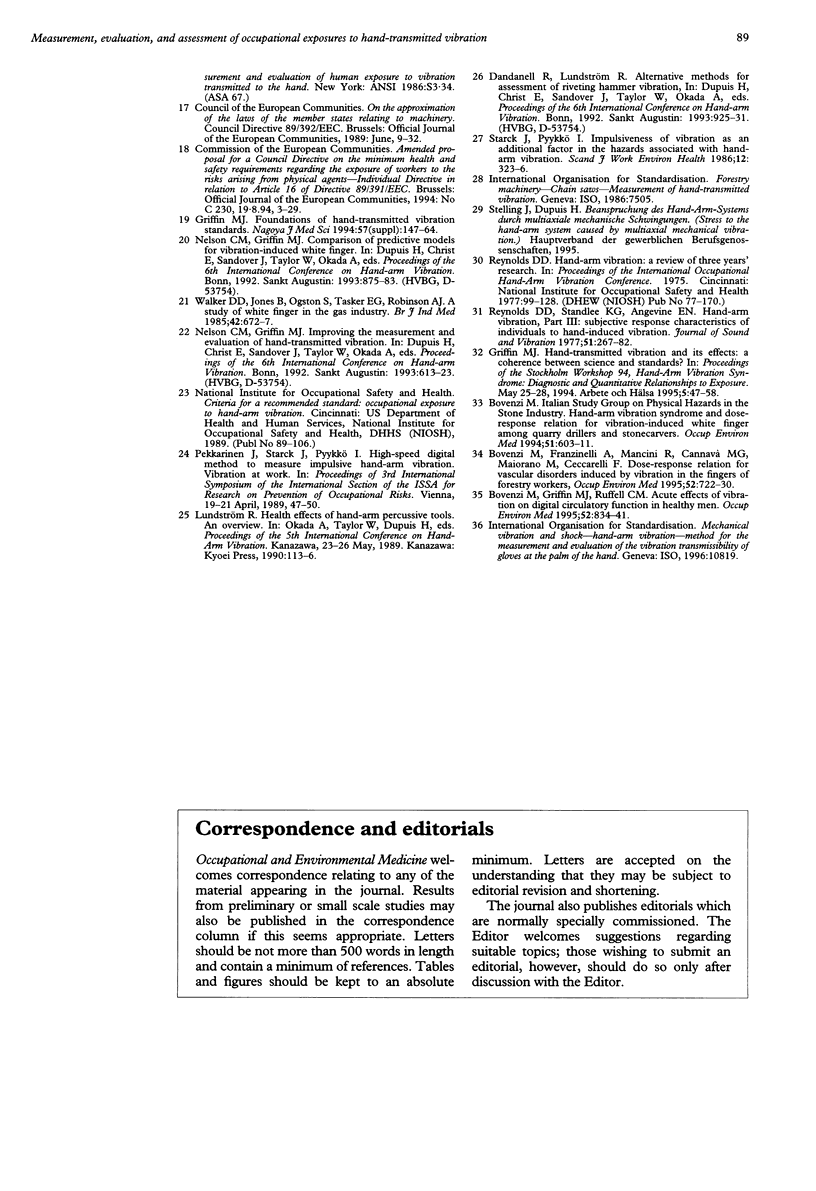
Selected References
These references are in PubMed. This may not be the complete list of references from this article.
- Bovenzi M., Franzinelli A., Mancini R., Cannavà M. G., Maiorano M., Ceccarelli F. Dose-response relation for vascular disorders induced by vibration in the fingers of forestry workers. Occup Environ Med. 1995 Nov;52(11):722–730. doi: 10.1136/oem.52.11.722. [DOI] [PMC free article] [PubMed] [Google Scholar]
- Bovenzi M., Griffin M. J., Ruffell C. M. Acute effects of vibration on digital circulatory function in healthy men. Occup Environ Med. 1995 Dec;52(12):834–841. doi: 10.1136/oem.52.12.834. [DOI] [PMC free article] [PubMed] [Google Scholar]
- Bovenzi M. Hand-arm vibration syndrome and dose-response relation for vibration induced white finger among quarry drillers and stonecarvers. Italian Study Group on Physical Hazards in the Stone Industry. Occup Environ Med. 1994 Sep;51(9):603–611. doi: 10.1136/oem.51.9.603. [DOI] [PMC free article] [PubMed] [Google Scholar]
- Griffin M. J. Foundations of hand-transmitted vibration standards. Nagoya J Med Sci. 1994 May;57 (Suppl):147–164. [PubMed] [Google Scholar]
- Kanazawa I., Sutoo D. Decrease of a peptide in the cat spinal cord after upper cervical transection. Neurosci Lett. 1981 Oct 23;26(2):113–117. doi: 10.1016/0304-3940(81)90335-9. [DOI] [PubMed] [Google Scholar]
- Starck J., Pyykkö I. Impulsiveness of vibration as an additional factor in the hazards associated with hand-arm vibration. Scand J Work Environ Health. 1986 Aug;12(4 Spec No):323–326. doi: 10.5271/sjweh.2136. [DOI] [PubMed] [Google Scholar]
- Walker D. D., Jones B., Ogston S., Tasker E. G., Robinson A. J. A study of white finger in the gas industry. Br J Ind Med. 1985 Oct;42(10):672–677. doi: 10.1136/oem.42.10.672. [DOI] [PMC free article] [PubMed] [Google Scholar]


